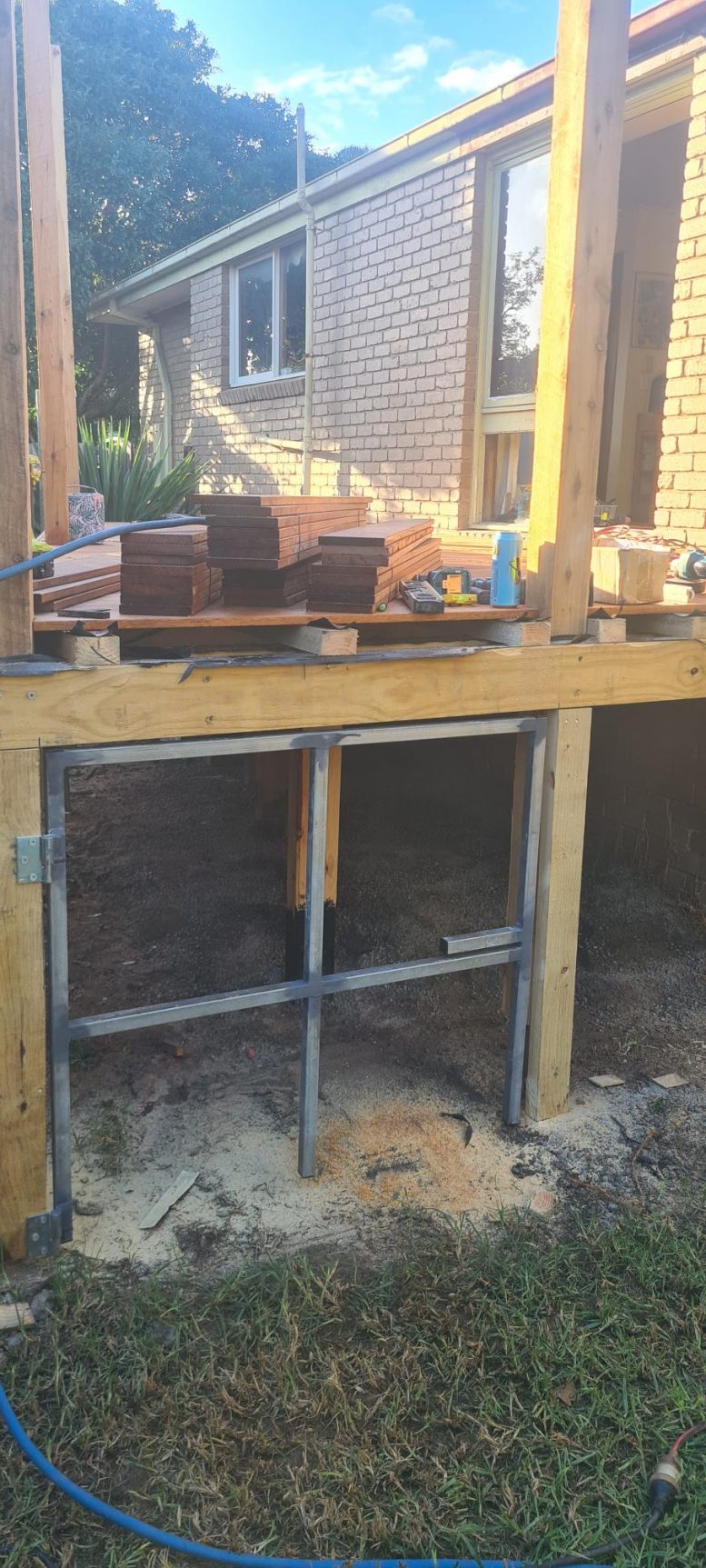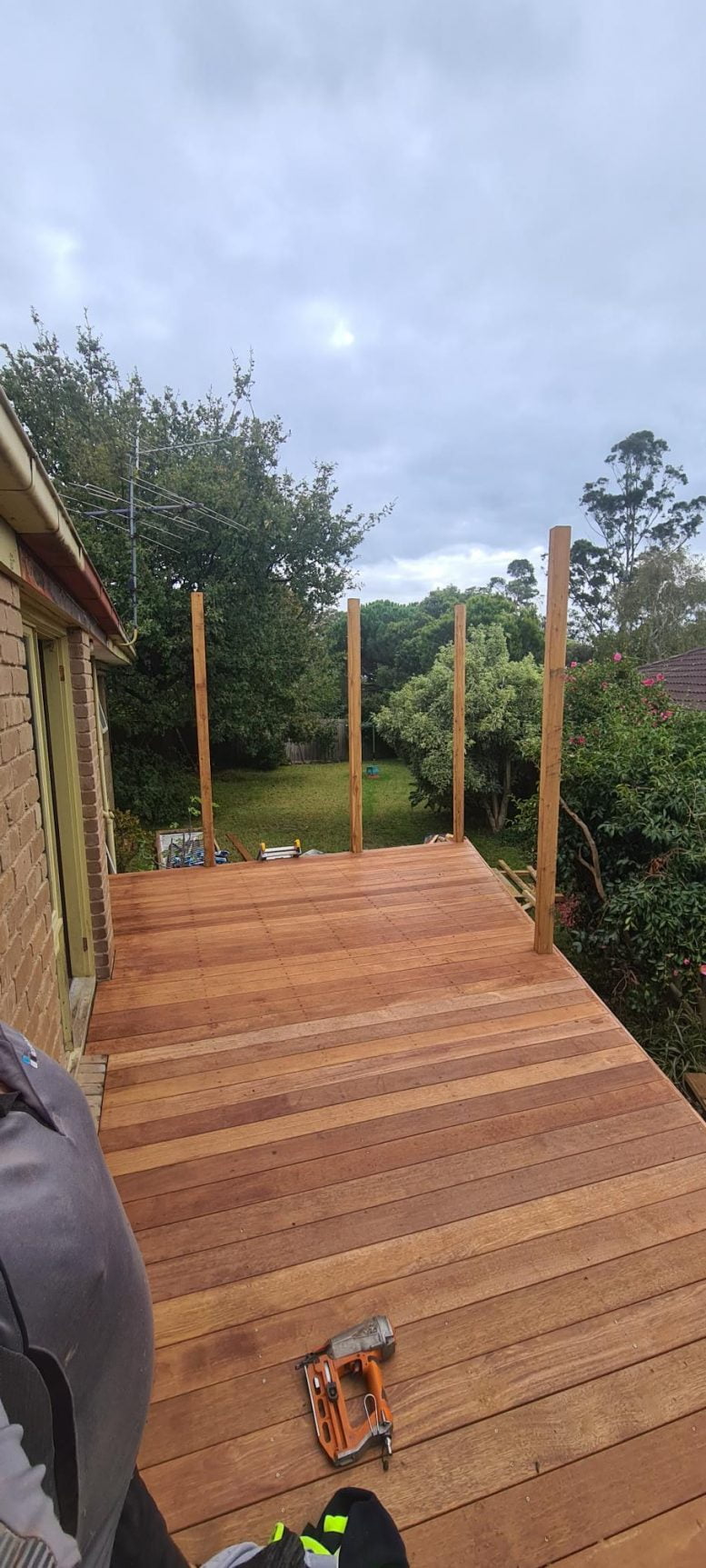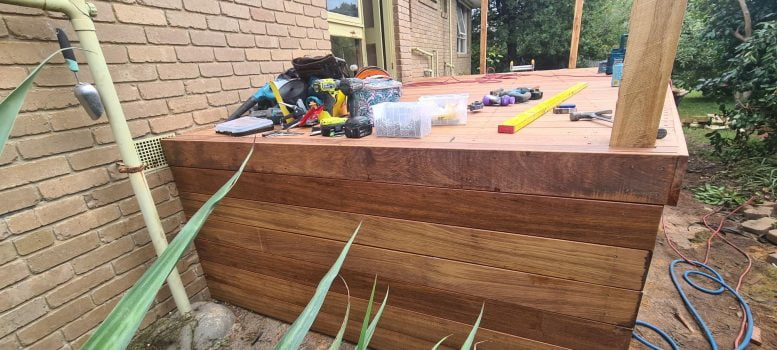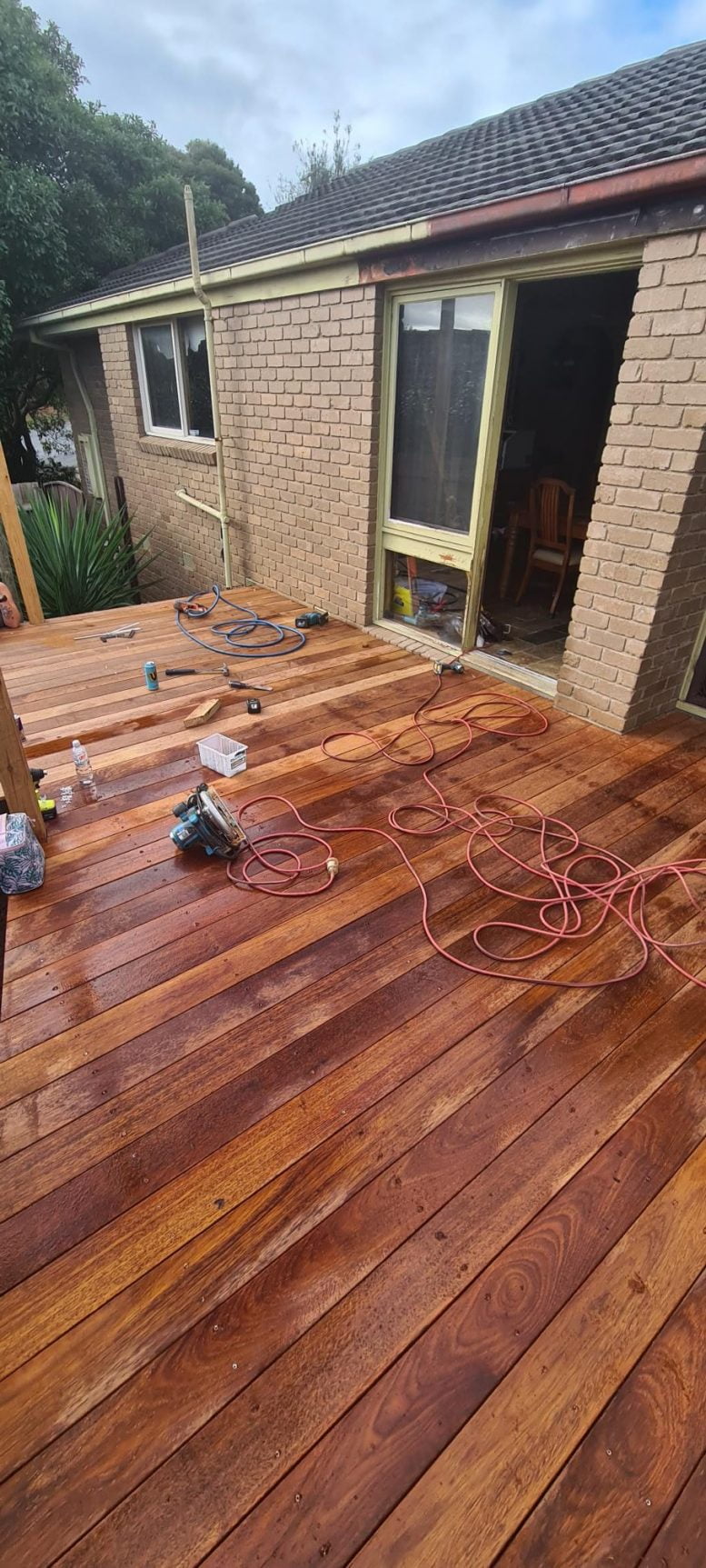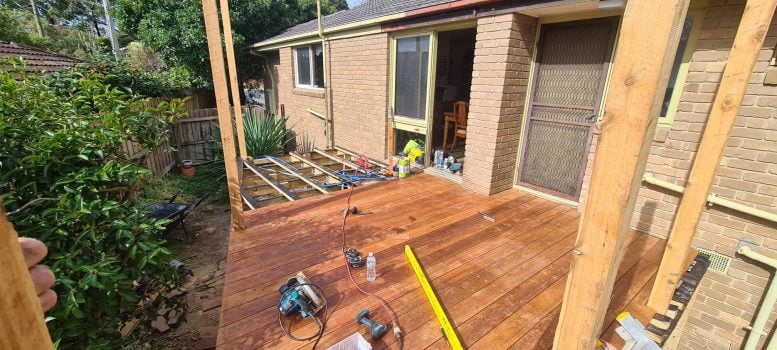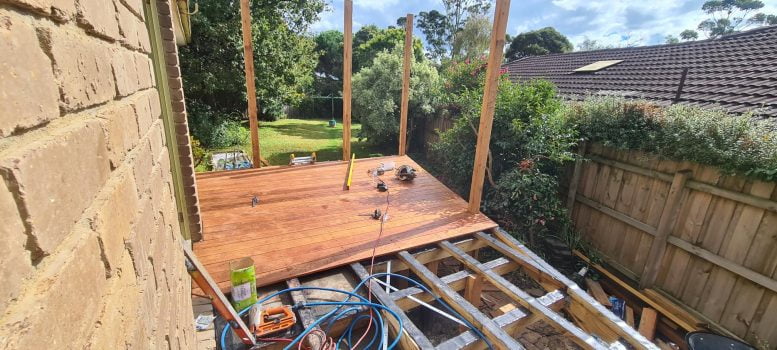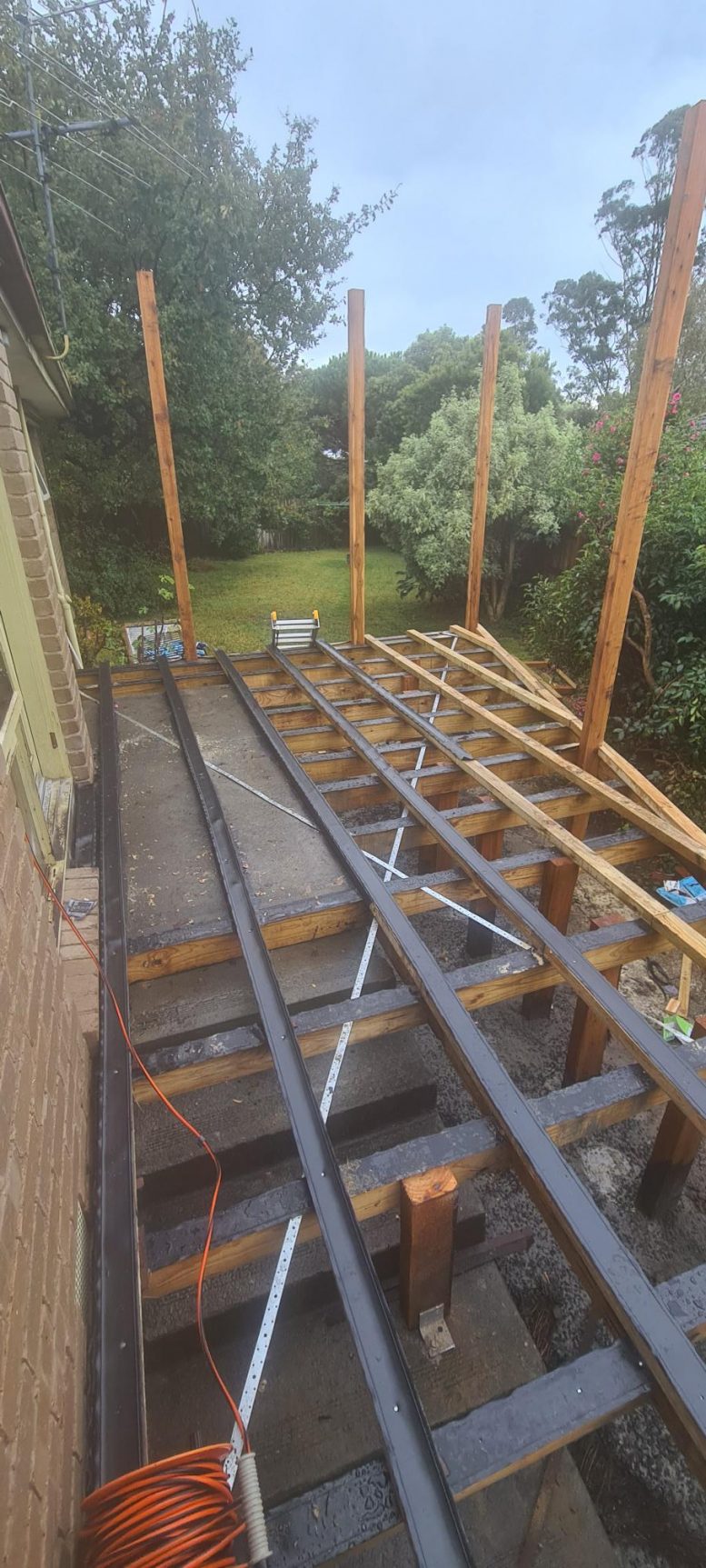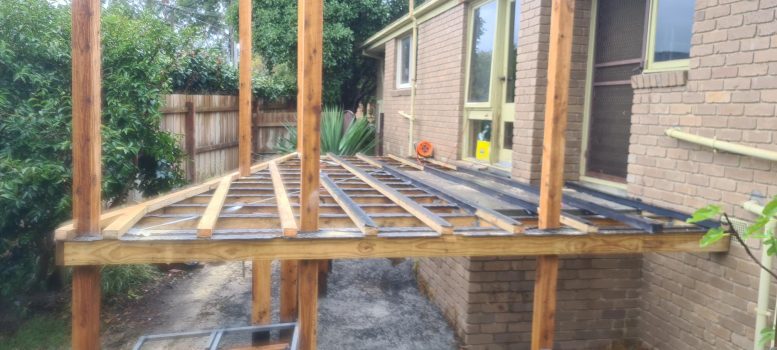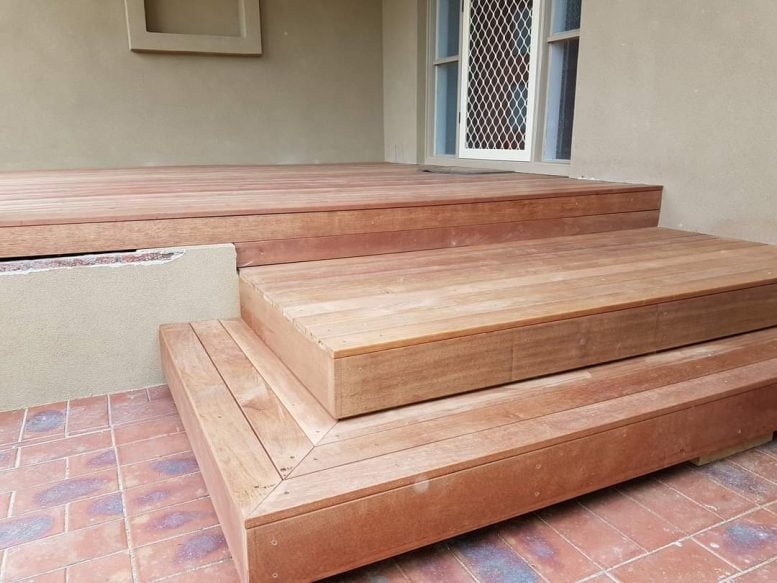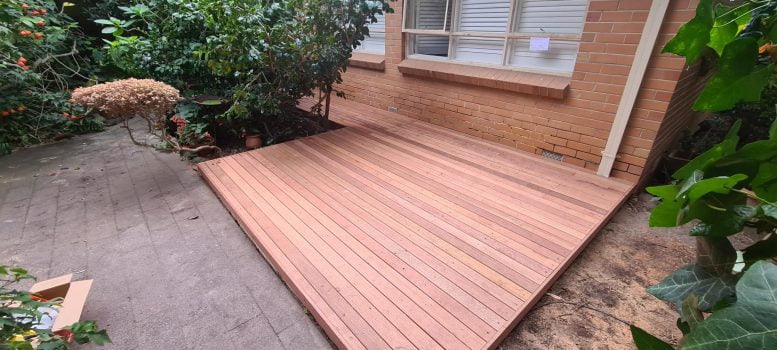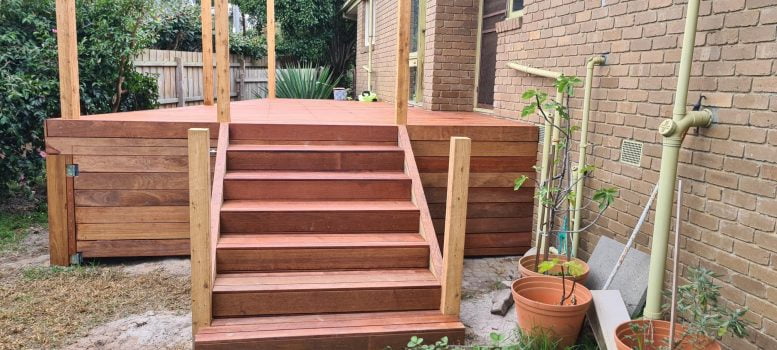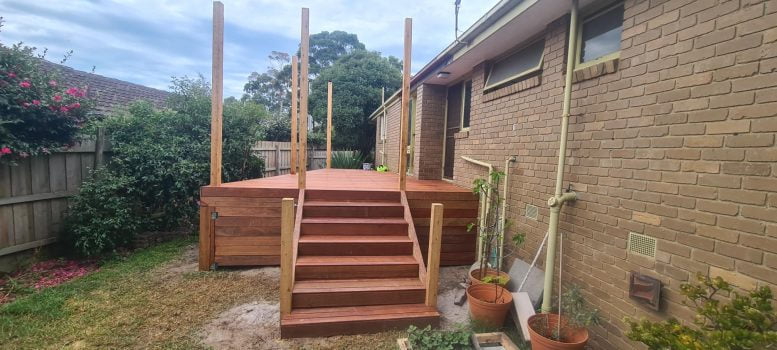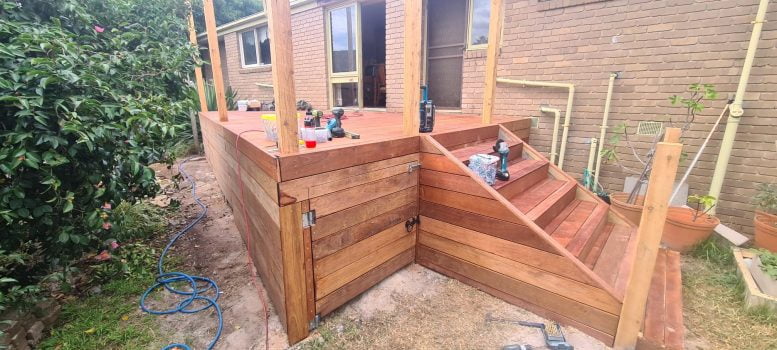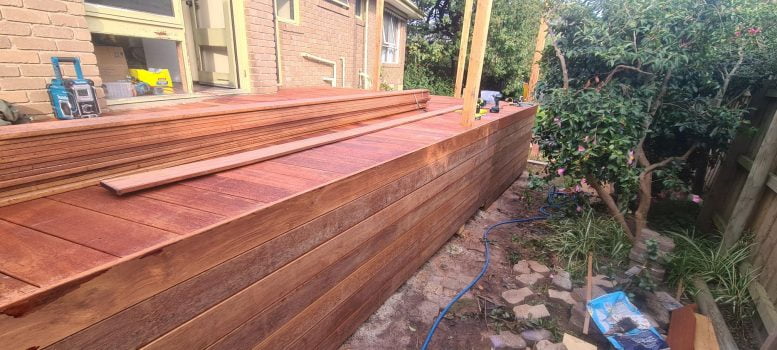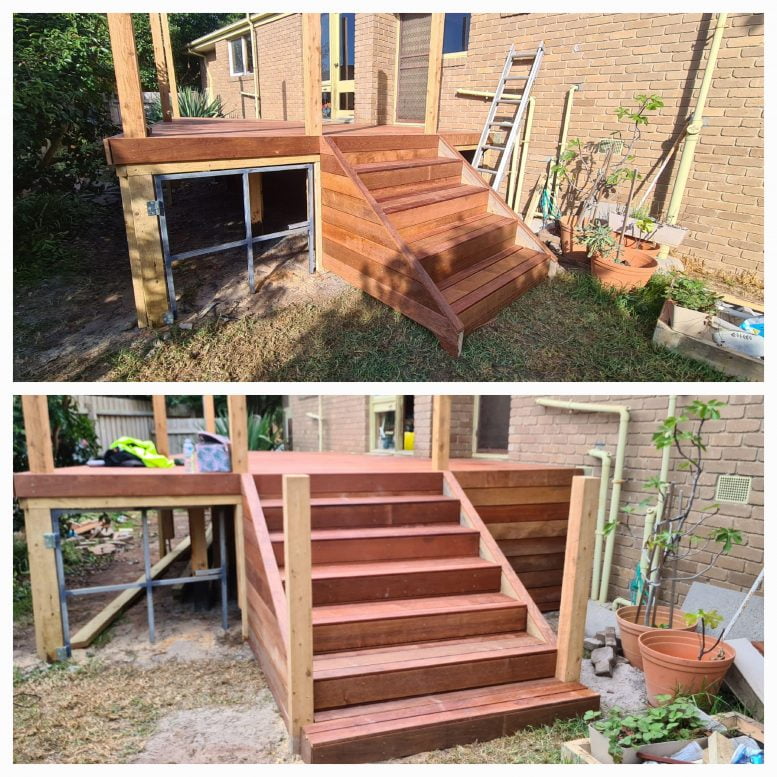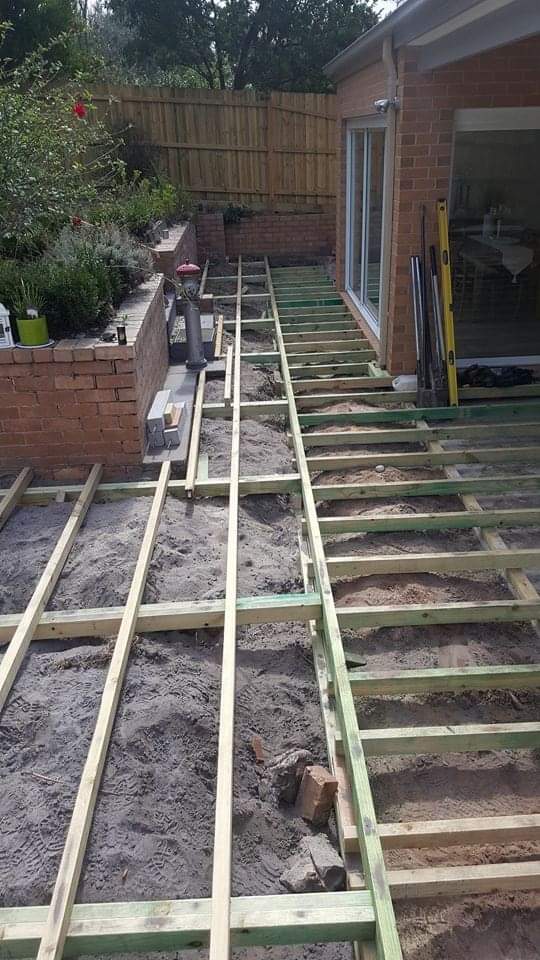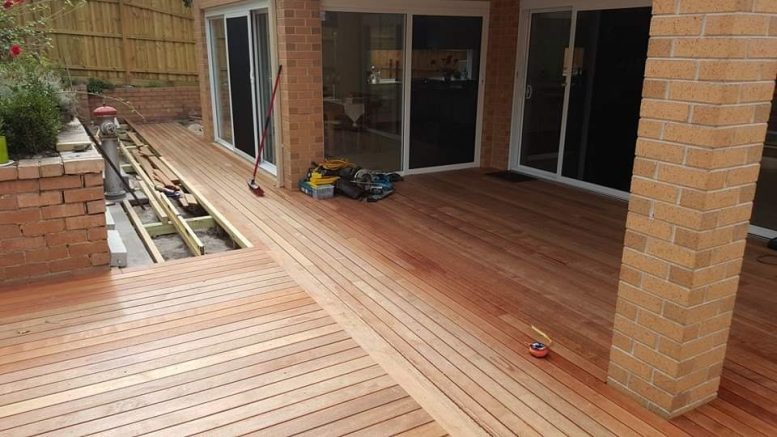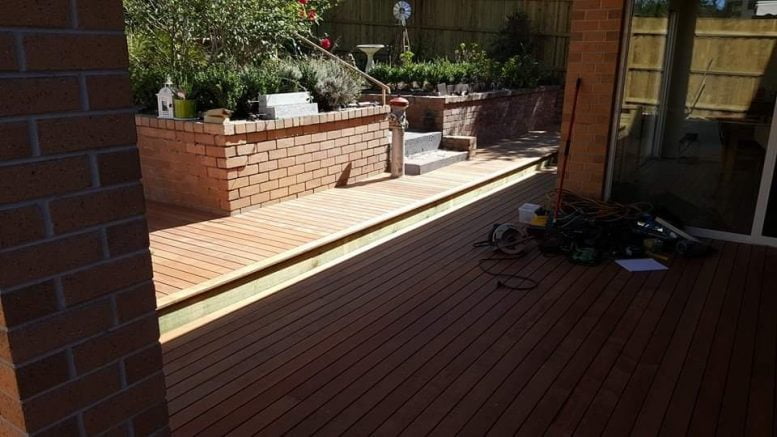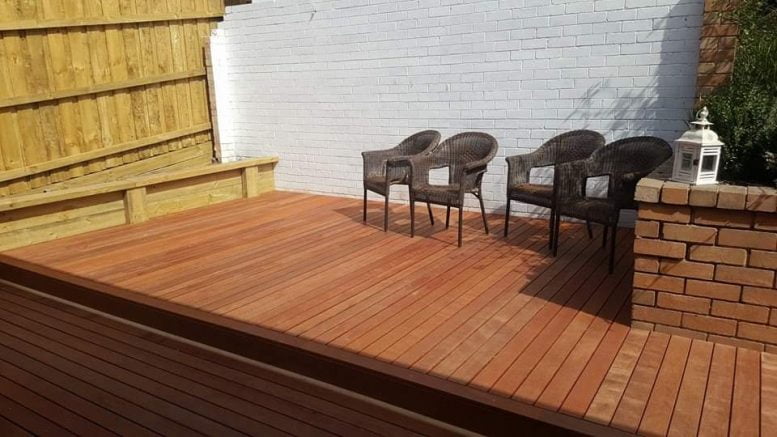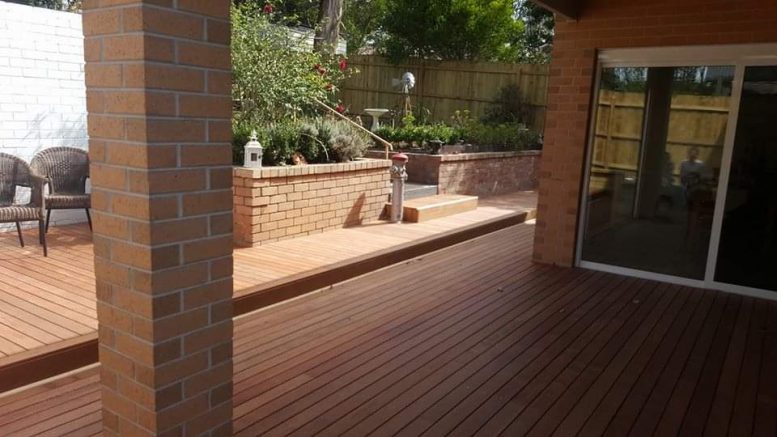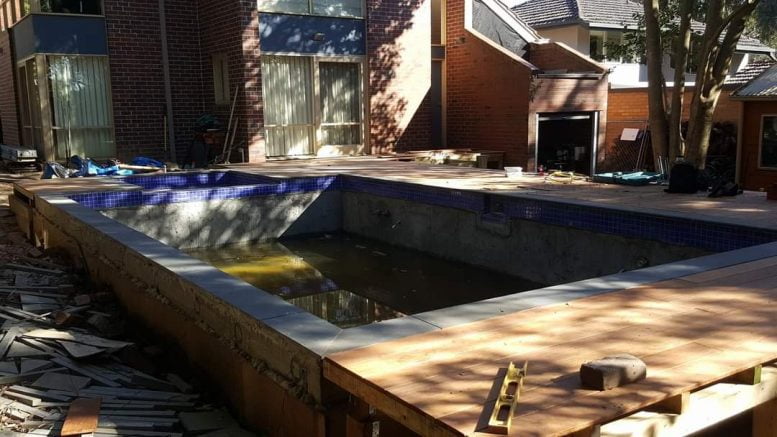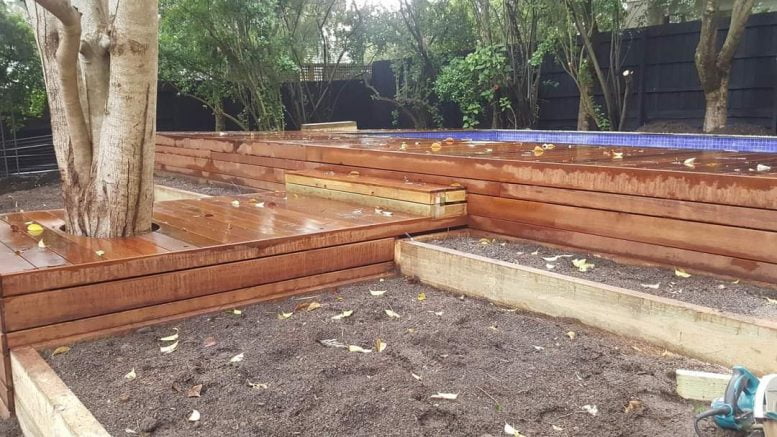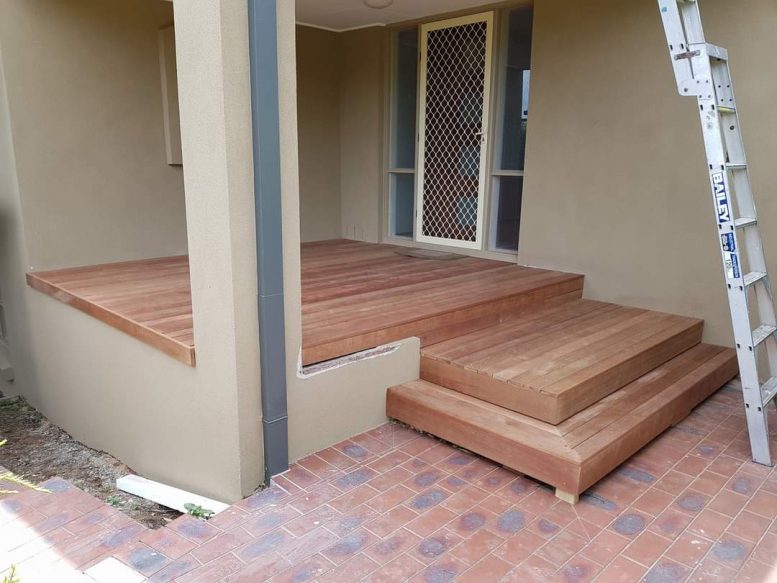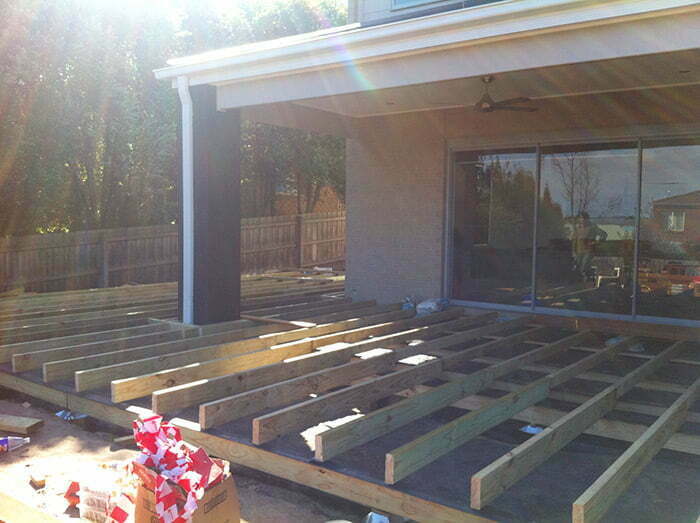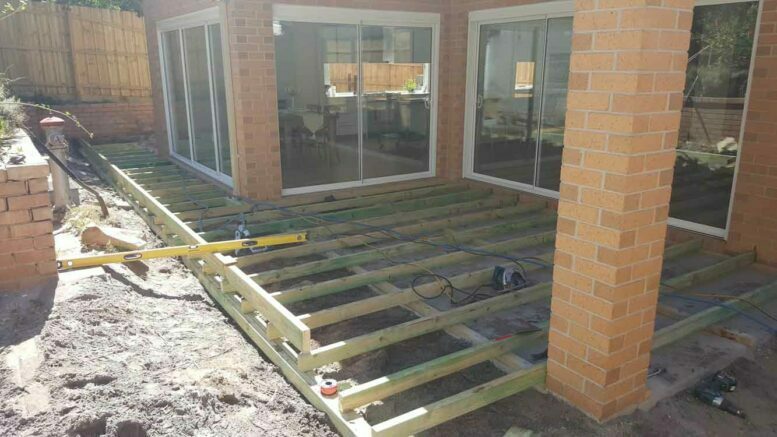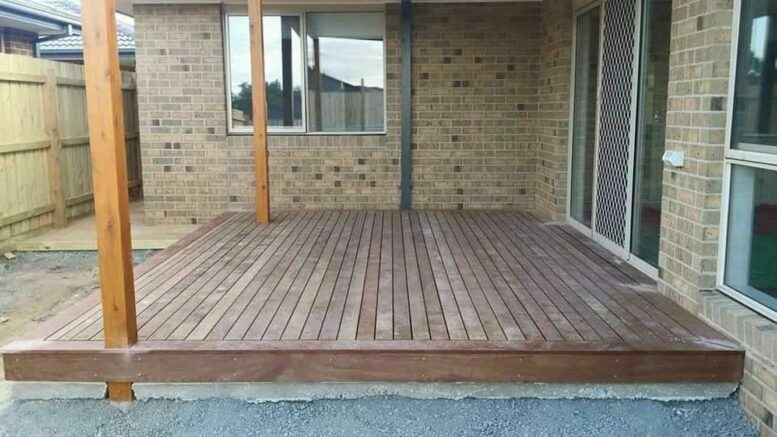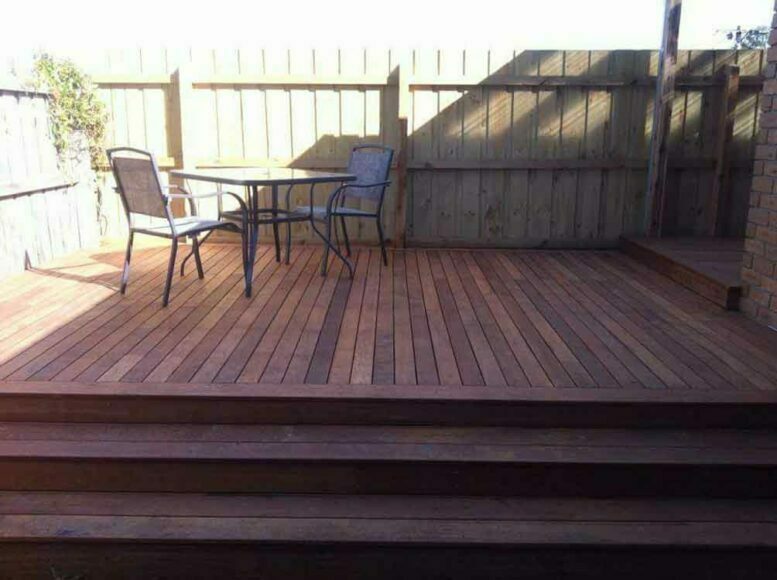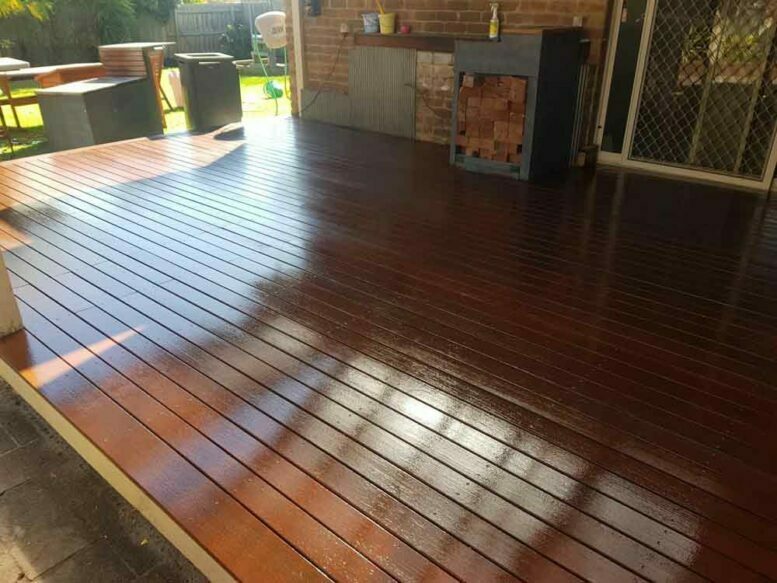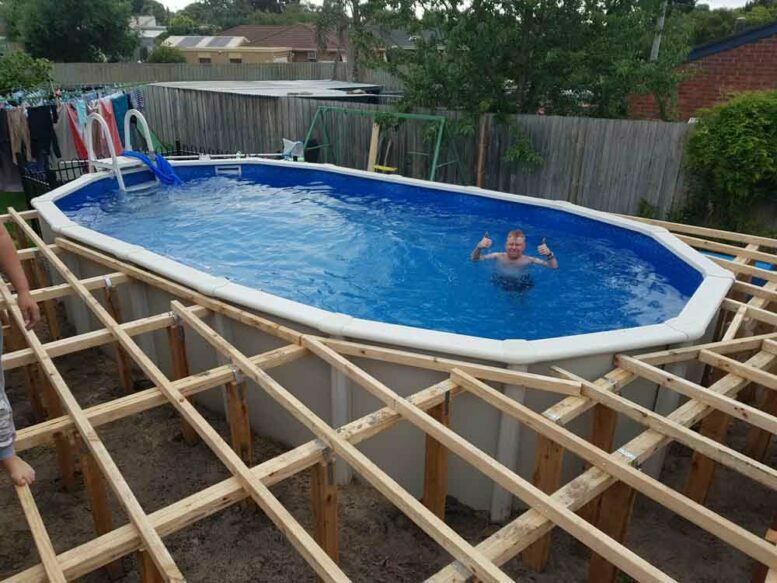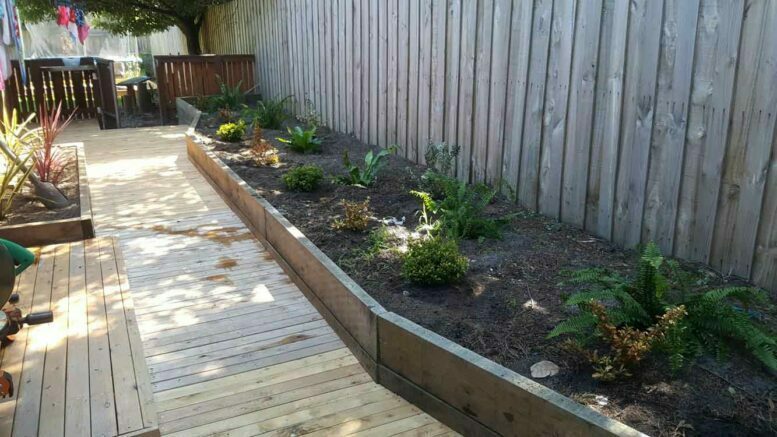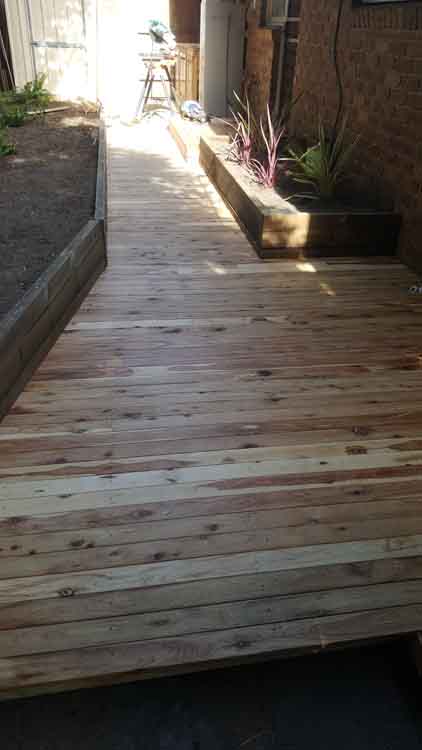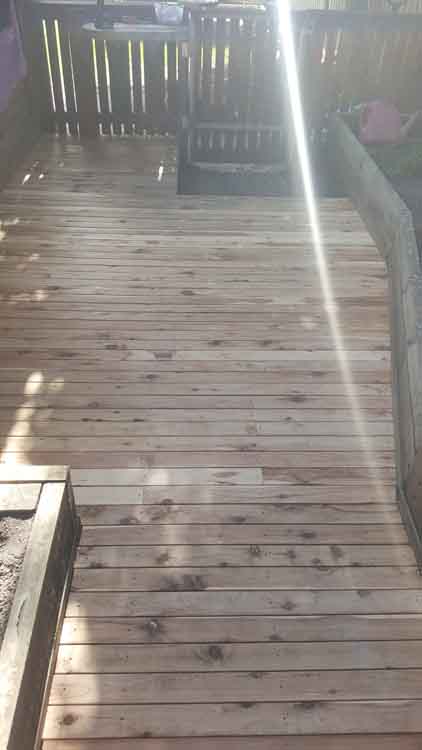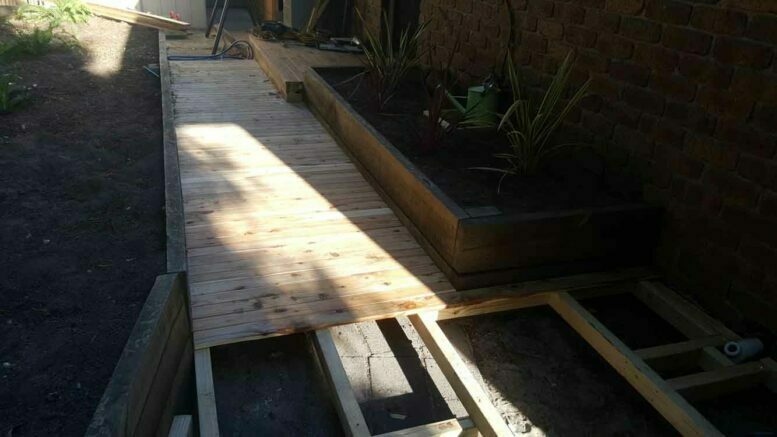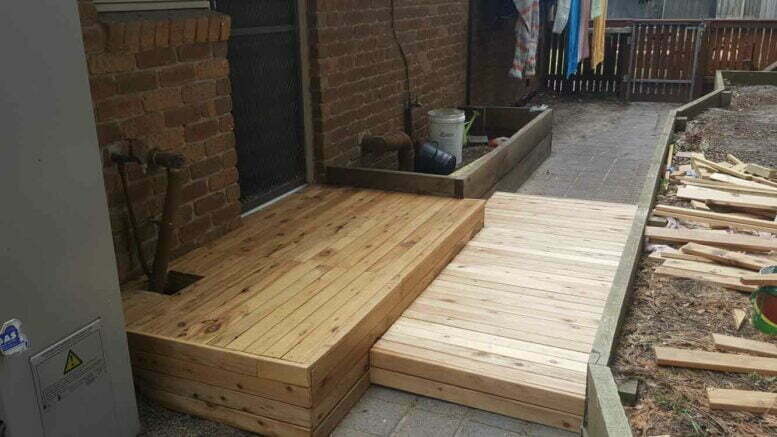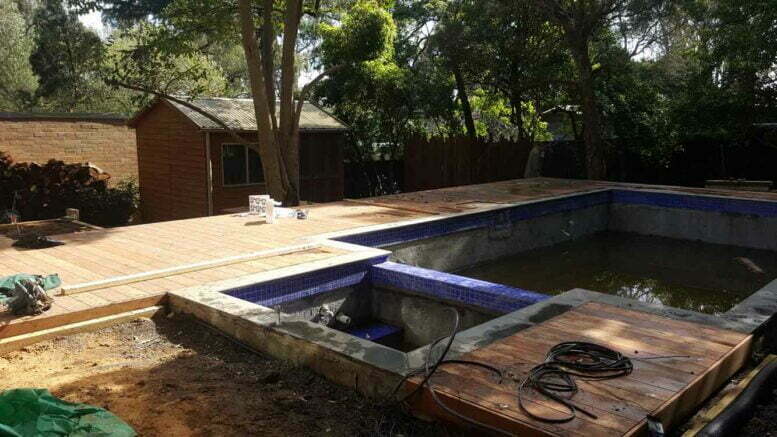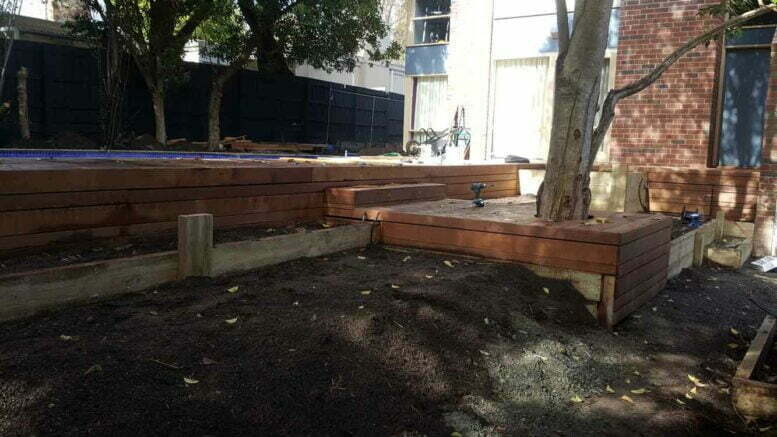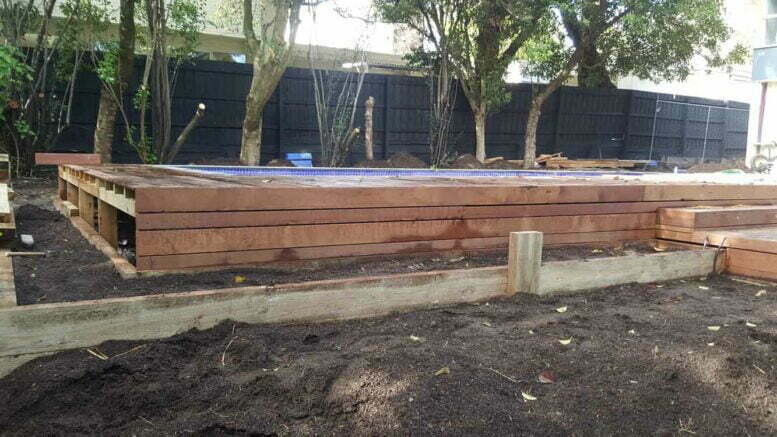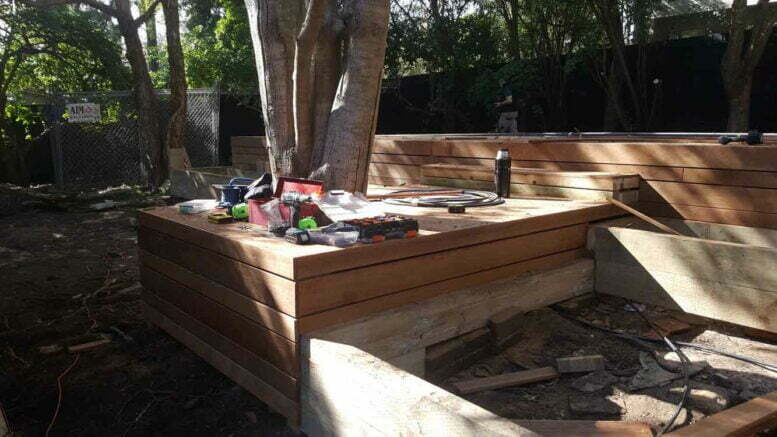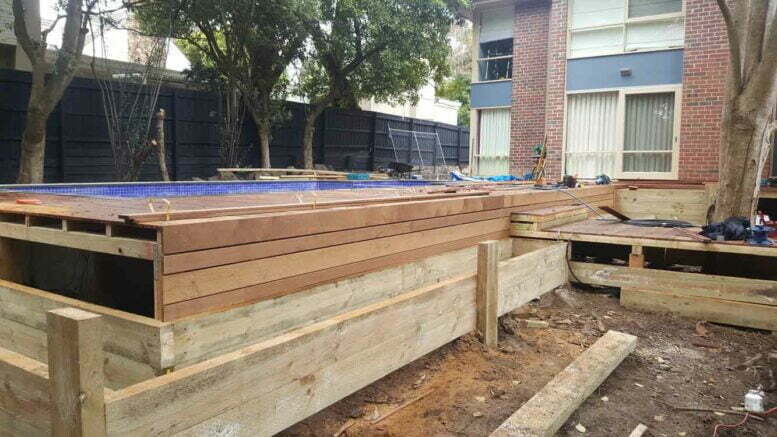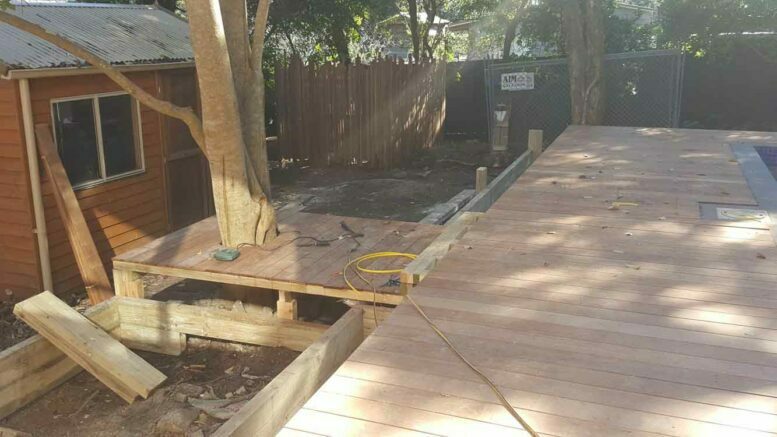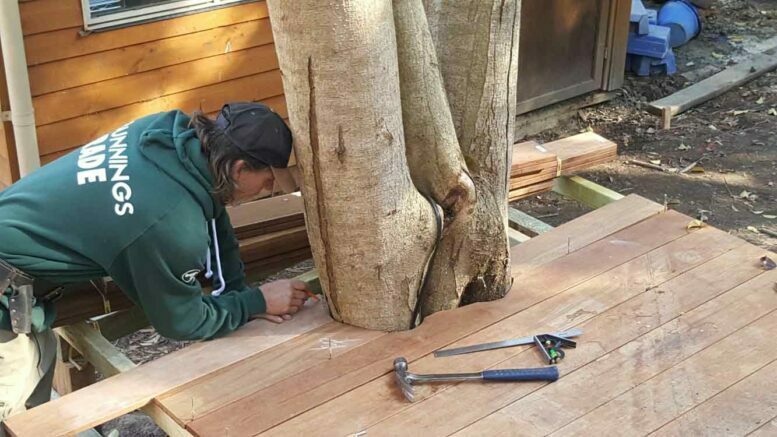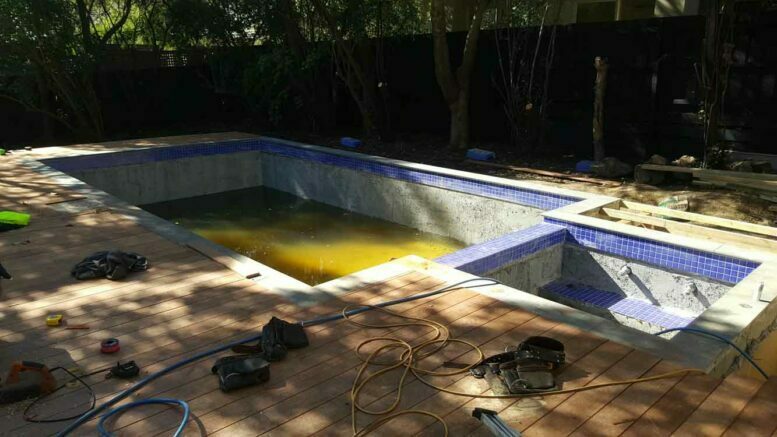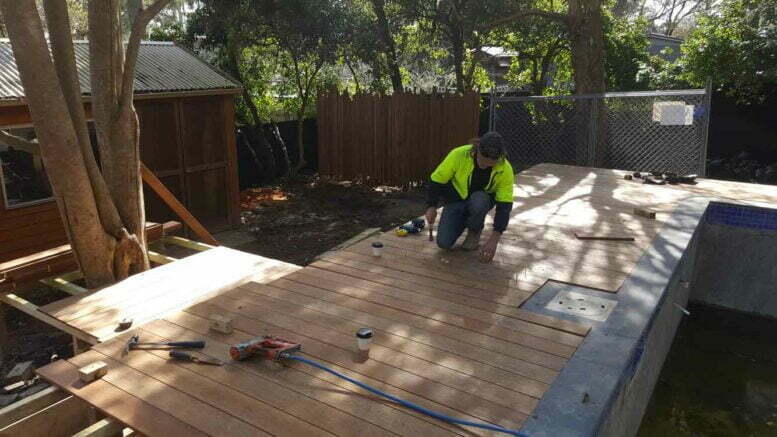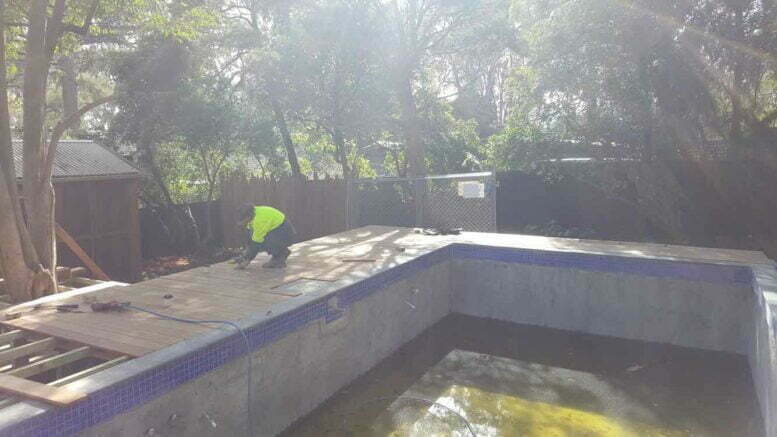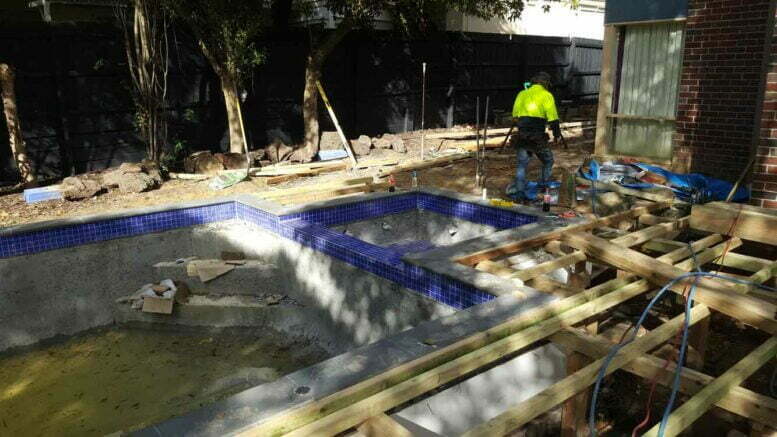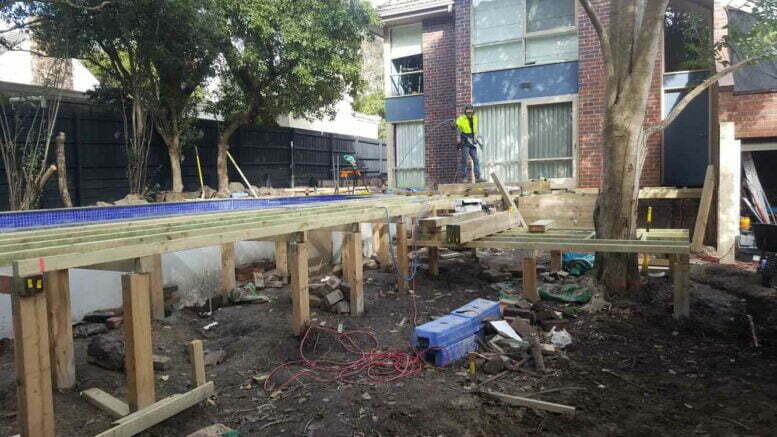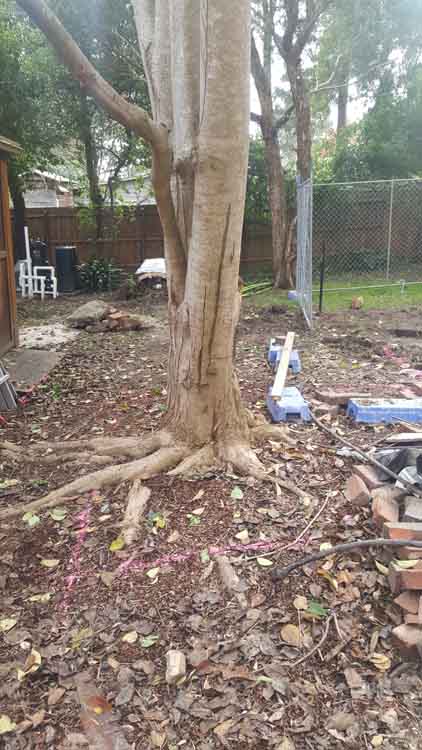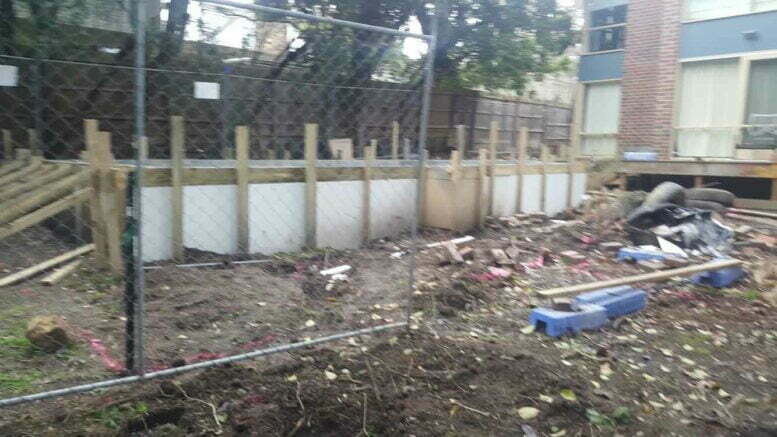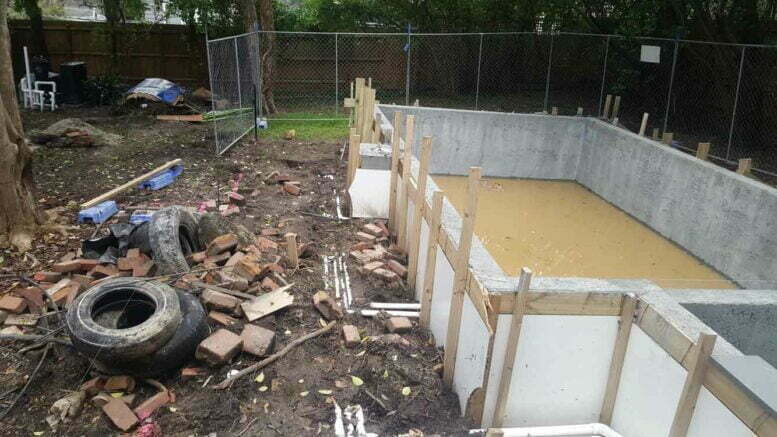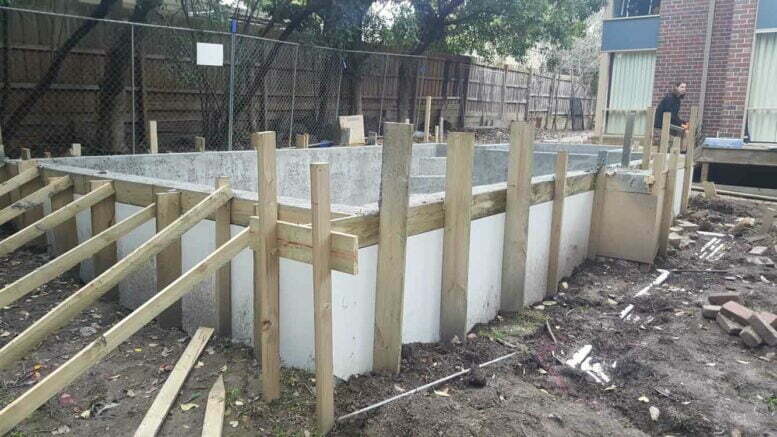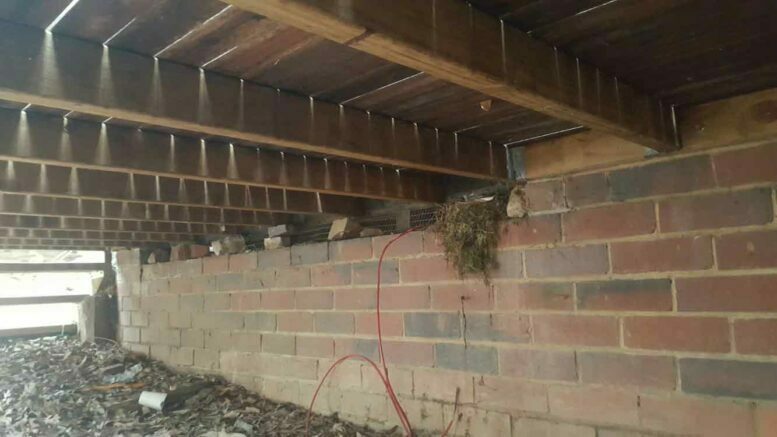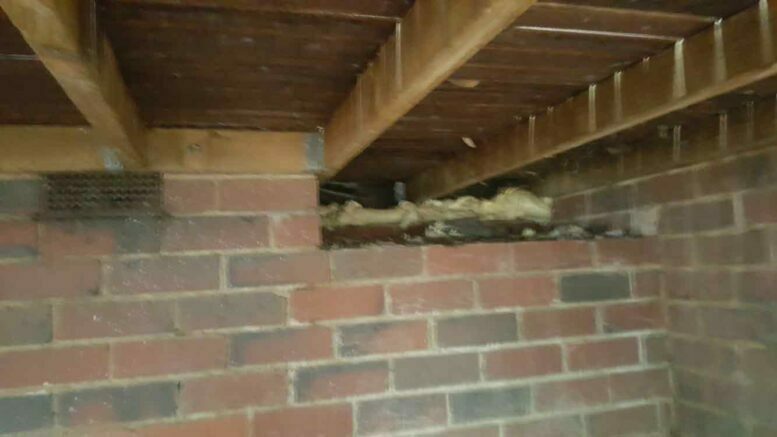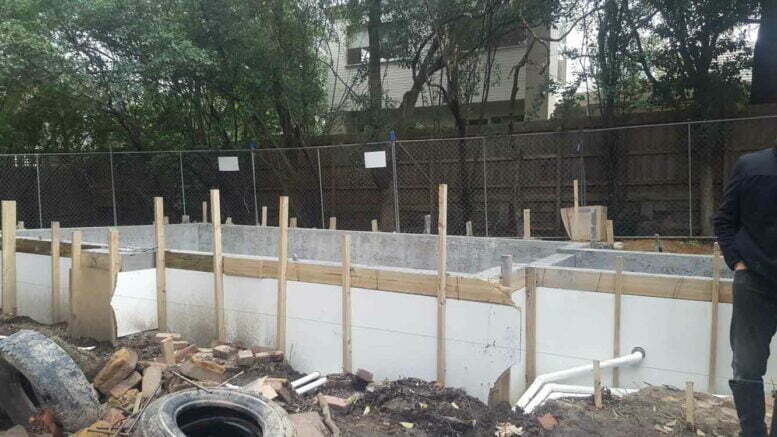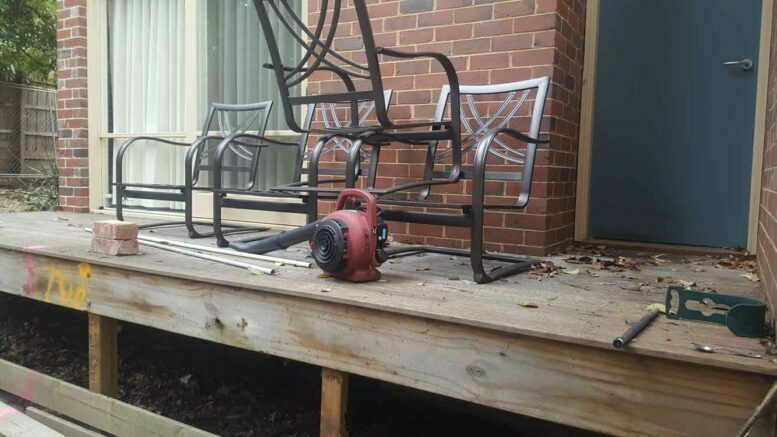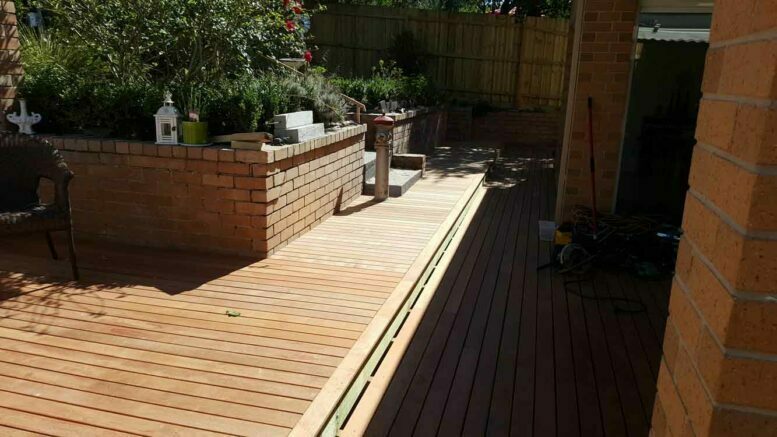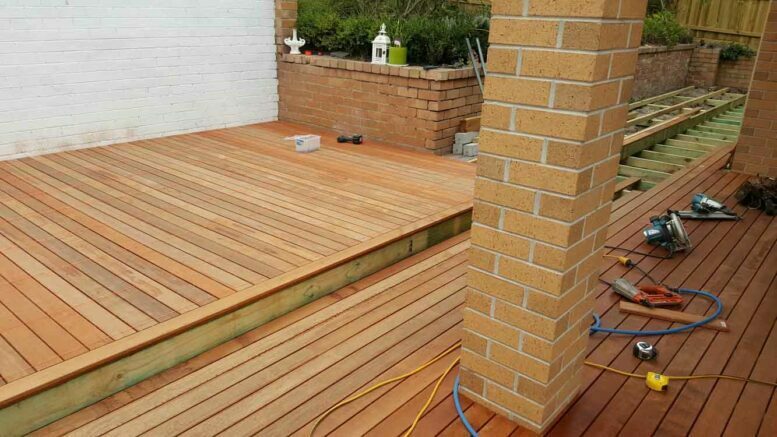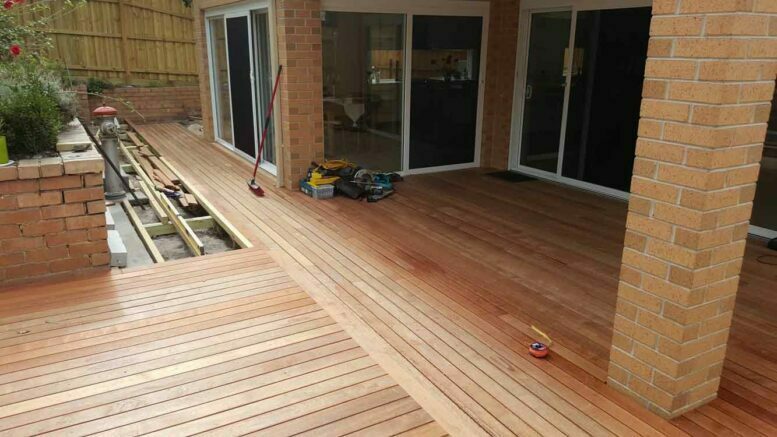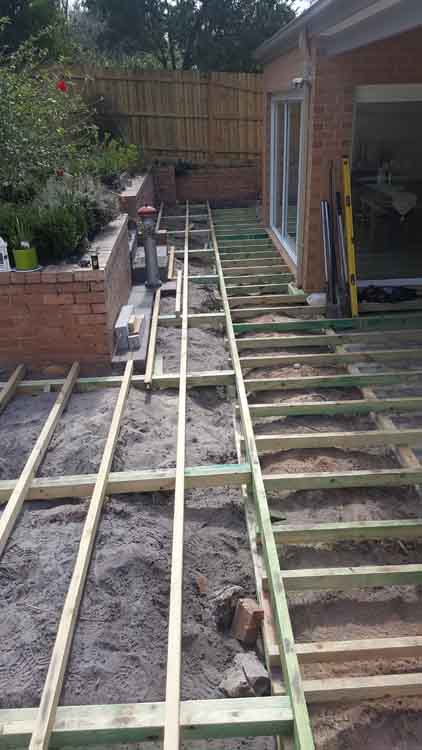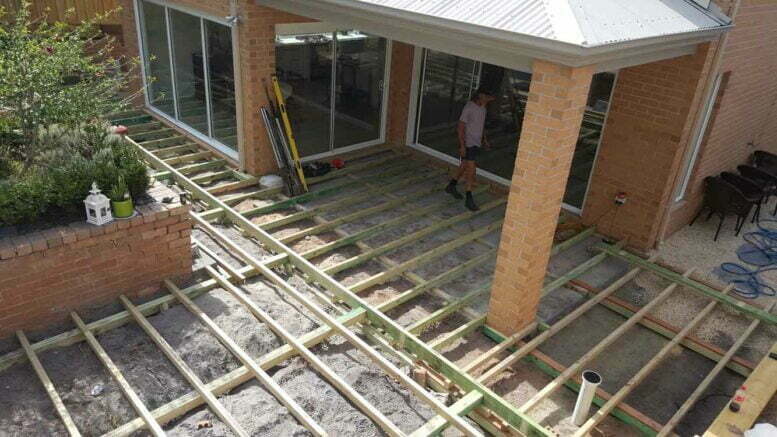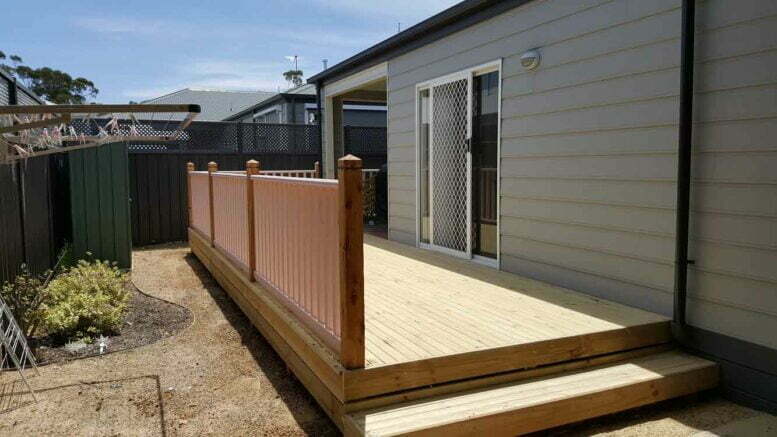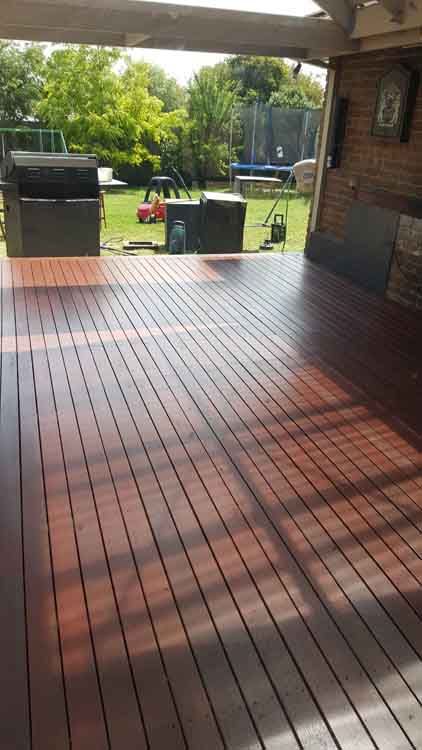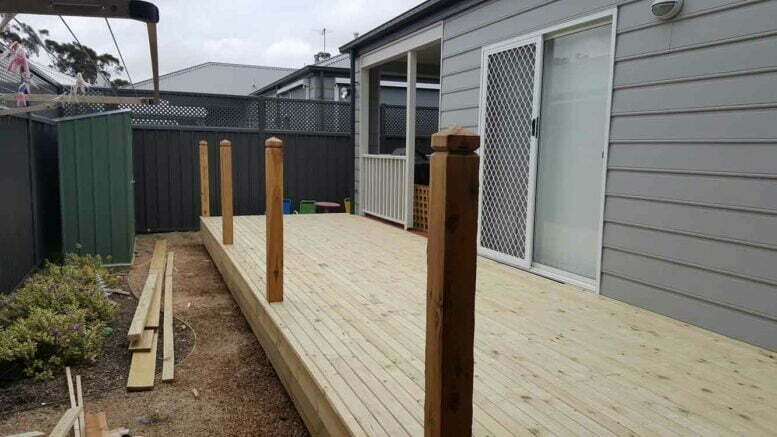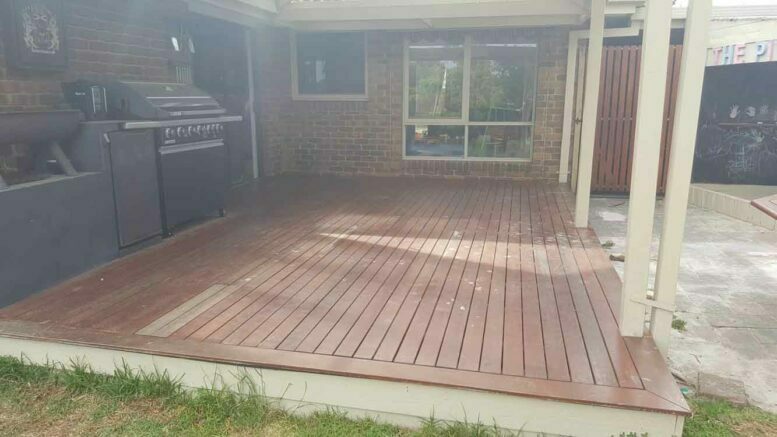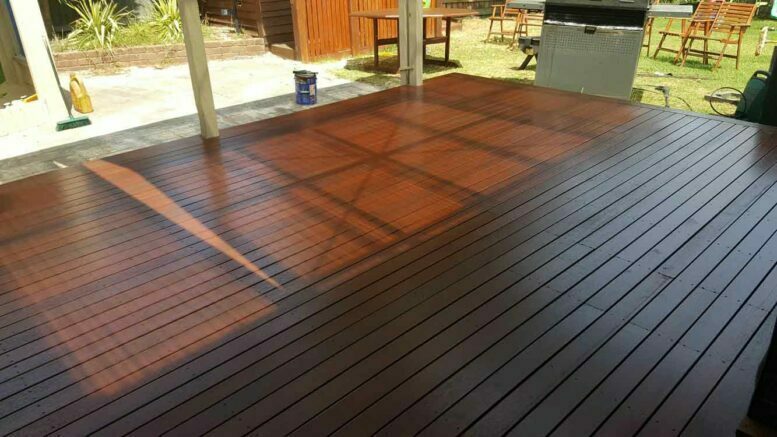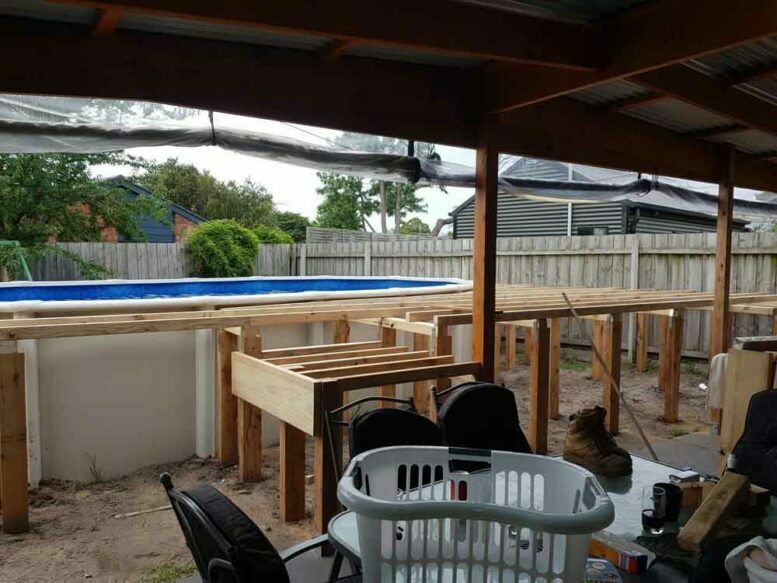Cost effective way to clean and prep your merbau fence or deck before staining.
It’s important to keep your timber deck clean, and there’s plenty of ways to do it. The best method is to use a cleaning product that matches the brand of your deck’s coating (e.g. if the deck is coated with Intergrain oiluse the Intergrain deck cleaning product). But you can’t always know (or remember) what your deck is coated with, and if this is the case, deck cleaning with napisan is a good alternative.
Timber’s porous nature means that it can absorb cleaning products and water, so if you choose the wrong cleaning product then it can have serious effects on your timber finish. Most deck cleaning takes place immediately before re-sanding and oiling, which means that a poorly chosen cleaning product can delay your entire project. Fortunately, Napisan is a safe, reliable, and accessible option that takes the risk out of choosing a timber deck cleaner. Not only is it easy to find, but it’s easy to use too—in this guide, we will run you through the process.
Why is cleaning timber decks with Napisan easier?
Almost all brands of deck cleaner rely on the same active ingredient: sodium percarbonate. That ingredient is what cuts through grime, and, most importantly, draws existing oils and saturates from timber grain. Because Napisan contains sodium percarbonate, you can get an effective result from using it as a cleaner. Most households have Napisan already, so this tip could also save you a trip to the hardware store.
How much Napisan you’ll need
Timber is extremely reactive to liquid cleaners—an oversupply will saturate the grain and give it an unpleasant pale shade, while an undersupply will simply be absorbed with little to no effect. That’s why it’s important to get the right ratio of Napisan to water. We recommend using two cups of Napisan in a 10 litre bucket of hot water. Simply mix the Napisan into the water, and stir until it dissolves.
Step 1: Mopping
Once your Napisan solution is ready, it’s time to mop it into your deck. This process can take time, because older or more damaged decks often absorb more of the cleaning solution and require additional mopping as a result. However, it’s important not to over-mop for the reasons we’ve outlined above: it will saturate the timber. To avoid that, use a cloth mop that is well-wringed—don’t leave pools of water as you mop. After you’ve mopped once, let the deck sit for about fifteen minutes, or until any residual water has been absorbed or evaporated. Your deck should look damp, but not wet before you proceed to the next step.
Step 2: Brushing
This step requires a sturdy cleaning brush and your remaining Napisan solution. It’s important to find a brush with firm bristles, because the scrubbing process requires a moderate amount of force, but it’s also important that the bristles don’t scratch the timber.
Deck brushes with nylon bristles are the best choice, because the nylon rarely leaves a mark, but maintains enough rigidity to move tough surface residue. You can find these brushes in hardware, automotive, and marine stores, or you can ask a decking specialist for advice.
When you have an appropriate brush, all you need to do is submerge the brush in your Napisan solution and scrub the decking by hand. It’s a long process, but it’s the only way to remove tough blemishes from the timber without damaging it further.
Step 3: Hosing
When you’re finished with brushing, hose off your deck and let it sit for a few days. The sitting period is vital, as it allows previously applied decking oils to rise to the surface of the grain. That surface can then be sanded back before a further coat of oil is applied. With the right choice in decking oil, your deck should look as good as new.



